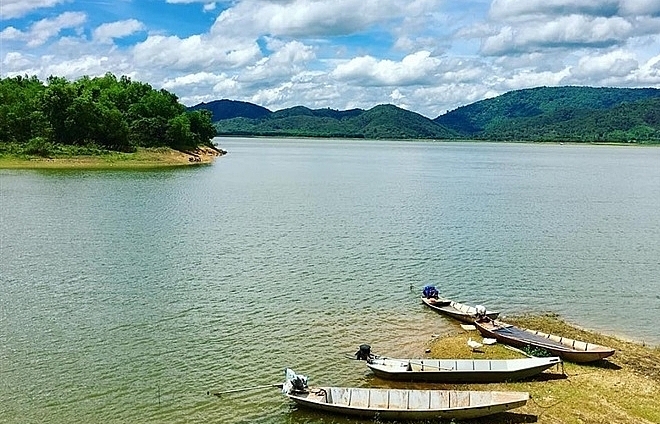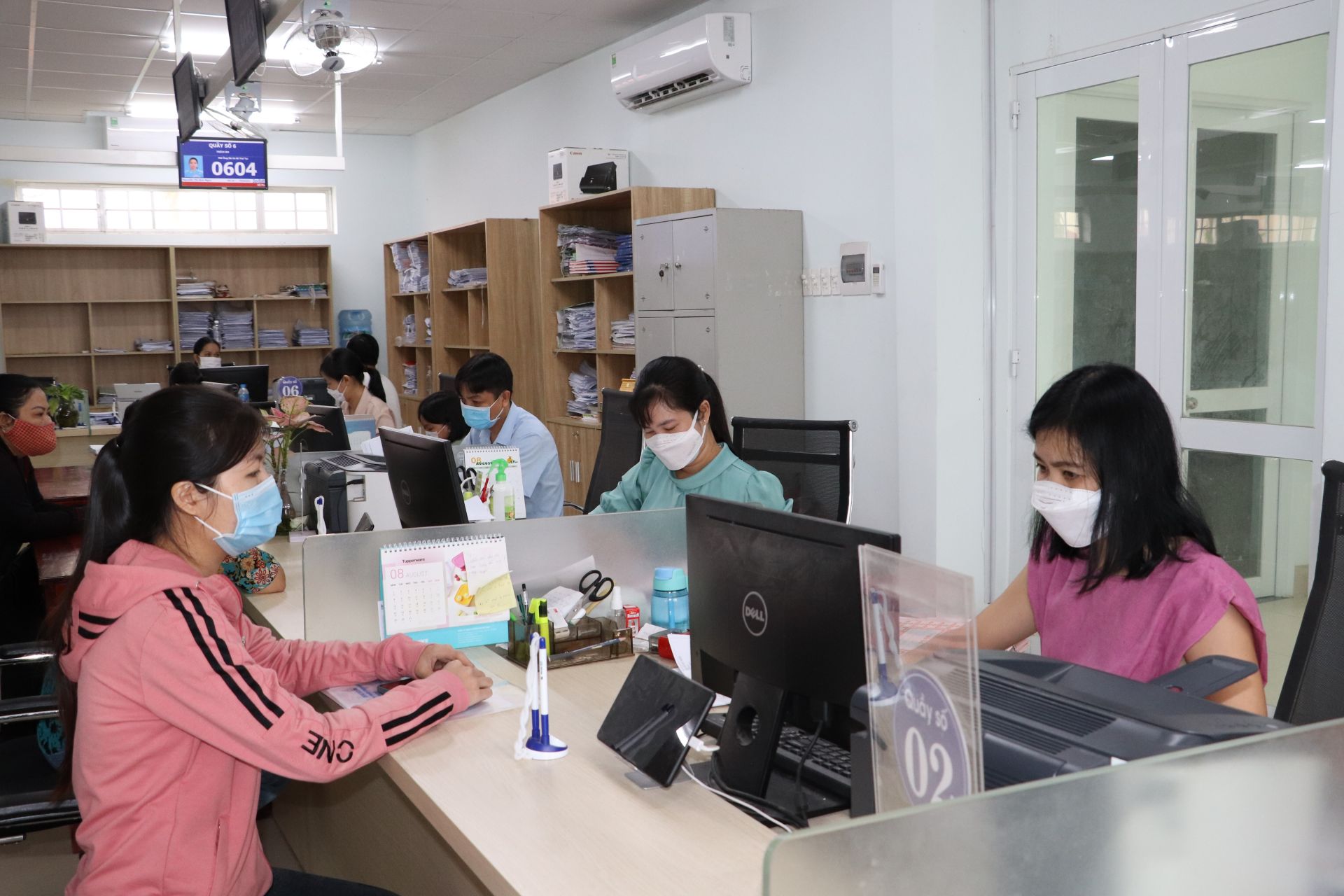Plan to implement Water Resources Planning for the period 2021–2030, with a vision to 2050 in Vietnam
What are the main contents of the Plan to implement Water Resources Planning for the period 2021–2030, with a vision to 2050 in Vietnam? – Thu Cuc (Hau Giang)

Plan to implement Water Resources Planning for the period 2021–2030, with a vision to 2050 in Vietnam (Internet image)
Regarding this issue, LawNet would like to answer as follows:
On February 6, 2024, the Prime Minister issued Decision 161/QD-TTg approving the Plan for implementing the Water Resources Planning for the period 2021–2030, with a vision to 2050.
Plan to implement Water Resources Planning for the period 2021–2030, with a vision to 2050 in Vietnam
The plan to implement the Water Resources Planning for the period 2021–2030, with a vision to 2050, has the following main contents:
(1) Planning implementation plan
* Prepare, review, and adjust integrated plans for inter-provincial river basins
- Urgently complete integrated river basin plans that have not yet been promulgated;
- Review and adjust comprehensive river basin plans after they are promulgated.
Details of the plan to prepare, review, and adjust the general river basin planning are in Appendix I attached to this Decision.
* Prepare and review specialized technical plans involving water exploitation and use
- Establish and review inter-provincial water resources plans, water resources plans for interconnected water infrastructures involving two or more provinces, flood prevention and control plans for embanked river sections, and irrigation system plans to ensure their alignment with approved comprehensive river basin plans and coherence with relevant planning regulations;
- Prepare and review promulgated urban water supply and drainage plans to be consistent with approved general river basin plans and synchronized with relevant plans according to the provisions of the planning law.
Detailed plans for implementing the contents and tasks of formulating, reviewing, and adjusting integrated planning for inter-provincial river basins and specialized technical planning with water exploitation and use are shown in Appendix I attached to Decision 161/QD-TTg.
* Review, amend, supplement, and build institutions and policies
- Review, amend, supplement, and develop institutions and policies on water resources in the Law on Water Resources (amended) and related laws, including the following main contents: Building policy mechanisms on regulating and distributing water sources through a system of decision support tools based on the management and operation of water exploitation and use systems; Review and supplement policies on fees for granting rights to exploit water resources in the direction of correctly and fully calculating the value of water resources;
- Develop a Decree and Circular guiding the implementation of the Law on Water Resources (amended);
- Review, develop, amend, and supplement Circulars and economic and technical norms in the field of water resources;
- Strengthen river basin organizations;
- Review and improve regulations and policies, improve the quality of warnings, hydrometeorological forecasts, and water resources;
- Review and supplement policies on forest environmental services, protection, and development of forests and aquatic resources;
- Continue to review, amend, and supplement regulations on the management and use of chemicals in agricultural production and aquaculture activities to minimize water pollution;
- Develop policies and mechanisms for sharing and allocating revenue from the exploitation and use of water resources and forest environmental services for water resource management, protection, and development activities, as well as for hydrological forecasting, prevention, control, and mitigation of water-related impacts and damages. Establish policies for revenue allocation from the exploitation and use of water resources between trading localities and downstream areas.
* Build and operate a water resources data information system and national water resources monitoring
- Invest, build, maintain, and operate the information system and national water resources database;
- Upgrade the water resource exploitation and use monitoring system and integrate it into the national water resources data information system;
- Build a system to monitor and supervise operational coordination according to inter-reservoir operating procedures of large and important reservoirs on 11 river basins in real time, including the following river basins: Hong - Thai Binh, Ma, Ca, Huong, Vu Gia - Thu Bon, Tra Khuc, Kon - Ha Thanh, Ba, Se San, Srepok, Dong Nai;
- Develop a digital transformation program in the field of water resources.
* Regulating, distributing, and developing water resources
- Build and maintain the operation of information systems and mathematical models to support decision-making on the regulation and distribution of water resources in river basins: Bang Giang - Ky Cung, Hong - Thai Binh, Ma, Ca, Huong, Vu Gia - Thu Bon, Tra Khuc, Kon - Ha Thanh, Ba, Se San, Srepok, Dong Nai, and Cuu Long in real time;
- Review and adjust 11 inter-reservoir operating procedures in the river basin towards real-time regulation and operation;
- Research and improve the efficiency of regulation to increase the water storage capacity of irrigation reservoirs; Research solutions to flood storage, freshwater retention, and water storage to overcome drought, water shortage, and saltwater intrusion;
- Carry out investigations and search for underground water sources to serve domestic water supply in areas frequently affected by saltwater intrusion, ethnic minority areas, border areas, islands, areas with water scarcity, and areas with particularly disadvantageous socio-economic conditions;
- Develop proactive water resource solutions for the South Central regions, Central Highlands, Mekong Delta, remote areas, and islands;
- Develop a program to maintain, protect, restore, and develop areas of watershed protection forests and special-use forests, especially in the Northern midland and mountainous regions, the North Central region and the Central Coast, and the Central Highlands. to protect aquatic resources to ensure water source security according to Decision 1595/QD-TTg of 2022 of the Prime Minister on Promulgation of Action Plan to implement Conclusion 36-KL/TW of 2022 of the Politburo on ensuring water source security and safety of dams and reservoirs until 2030, with a vision to 2045.
* Improve water use efficiency
- Research and apply technology in the management, exploitation, and operation of irrigation works, advanced irrigation technology, and water saving to improve water use efficiency;
- Establish, review, and adjust operating procedures for irrigation reservoirs, irrigation systems, and other irrigation works;
- Establish, review, and adjust operating procedures for hydroelectric reservoirs;
- Implement solutions to use water economically and effectively, reducing loss rates in urban and rural water supply systems;
- Implement the project to transform the crop structure to use water economically and effectively;
- Implement irrigation modernization programs and projects, especially large irrigation systems.
* Protect water resources, prevent and combat degradation, depletion, water pollution, and harm caused by water.
- Control water exploitation and use activities, wastewater discharge into water sources in river basins, and irrigation systems in accordance with water source functions, water quality goals, and minimum flow;
- Protect water sources with the function of providing domestic water;
- Restore degraded, depleted, and polluted rivers and water sources:
+ Develop and implement a pilot project to improve and restore the degraded, depleted, and polluted water resources of the Nhue - Day River;
+ Develop and implement a pilot project to improve and restore degraded, depleted, and polluted water sources.
+ Develop and implement pilot projects to improve and restore degraded and depleted water sources and reduce pollution in the Bac Hung Hai irrigation system and Ngu Huyen Khe river.
Based on the pilot results, we will consider implementing projects to improve and restore degraded, depleted, and polluted water sources in the Vu Gia River, downstream of the Tra Khuc River (behind Thach Nham Dam), upstream of the Ba River (after An Khe Dam), and downstream of the Dong Nai River area.
- Restore and protect areas and underground aquifers with reduced water levels, pollution, and salinity; Complete zoning to limit underground water exploitation, delineate areas that must register for underground water exploitation;
- Zone the level of water scarcity, forecasting and warning the level of water shortage, pollution, and degradation of water resources to serve the regulation of water resource distribution, and building a set of water security indicators;
- Implement programs and projects to enhance drainage capacity, flood prevention, and urban wastewater treatment.
* Dam and reservoir safety program
Effectively implement the dam and reservoir safety program according to Decision 1595/QD-TTg of the Prime Minister in 2022 on promulgating the Action Plan to implement Conclusion 36-KL/TW in 2022 of the Politburo on ensuring water source security and safety of dams and reservoirs until 2030, with a vision to 2045.
* Science, technology, and international cooperation
- Research and develop a set of indicators on water scarcity and water security indicators;
- Research and apply technology in the management and operation of irrigation works; use advanced irrigation technology to use water economically and effectively;
- Develop an international cooperation program to share information and data on water exploitation and use, hydrometeorological monitoring, forecasting, warning, monitoring, and operating dams and reservoirs, improve water use efficiency, and find solutions to ensure water resource security in the river basin.
* Propaganda to raise awareness and train human resources
- Develop and implement communication programs; Organize training to improve professional capacity, skills, and management skills for management, scientific research, and water resources management staff;
- Develop projects that promote community participation, gender equality, diversity, and social inclusion (GEDSI), ensuring access to water resources is based on principles of equity and sustainability;
Details of capital sources and investment phasing to implement tasks, programs, schemes, and projects in the planning period are specified in Appendix II attached to this Decision.
(2) Policies and implementation solutions
Deploy synchronously, with a focus on key groups of solutions on: laws and policies; finance; investment; science - technology, and international cooperation; propaganda to raise awareness; training; capacity building; and organizing and supervising the implementation of planning specifically stipulated in Section V of Decision 1622/QD-TTg in 2022 of the Prime Minister approving the Water Resources Planning for the period 2021–2030, with a vision to 2050.
- Key word:
- water resources planning
- in Vietnam
- Number of deputy directors of departments in Vietnam in accordance with Decree 45/2025/ND-CP
- Cases ineligible for pardon in Vietnam in 2025
- Decree 50/2025 amending Decree 151/2017 on the management of public assets in Vietnam
- Circular 07/2025 amending Circular 02/2022 on the Law on Environmental Protection in Vietnam
- Adjustment to the organizational structure of the Ministry of Health of Vietnam: Certain agencies are no longer listed in the organizational structure
- Vietnam aims to welcome 22-23 million international tourists in Vietnam in 2025
-

- Emergency response and search and rescue organizations ...
- 10:29, 11/09/2024
-

- Handling of the acceptance results of ministerial ...
- 09:30, 11/09/2024
-

- Guidance on unexploded ordnance investigation ...
- 18:30, 09/09/2024
-

- Sources of the National database on construction ...
- 16:37, 09/09/2024
-

- General regulations on the implementation of administrative ...
- 11:30, 09/09/2024
-

- Notable new policies of Vietnam effective as of ...
- 16:26, 11/04/2025
-
.Medium.png)
- Notable documents of Vietnam in the previous week ...
- 16:21, 11/04/2025
-
.Medium.png)
- Notable documents of Vietnam in the previous week ...
- 16:11, 02/04/2025
-
.Medium.png)
- Notable new policies of Vietnam to be effective ...
- 16:04, 02/04/2025
-
.Medium.png)
- Notable new policies of Vietnam effective from ...
- 14:51, 21/03/2025

 Article table of contents
Article table of contents
